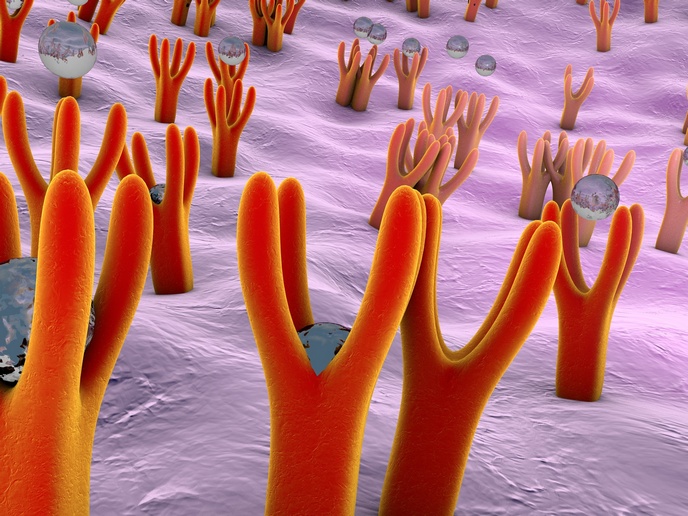A new approach to mapping cells in the body
More accurate imaging of cellular elements has become possible thanks to the latest advances in light microscopy. The technology in question, known as stimulated emission depletion (STED) microscopy, takes conventional resolution of around 200-300 nm down to an impressive 30-60 nm. Combining this with another new technology – two-colour STED microscopy – enabled researchers to determine the position of cellular elements with nanometre accuracy. The EU-funded NANOMAP (The synapse nanomap) project worked to create a cellular nanomap of the synapse using microscopy, a task that is not feasible with conventional light microscopy. The project exploited STED microscopy to effectively pinpoint the positions of the major components of the synapse. More specifically, the project team used cultured hippocampal neurons, which have 1-micron-diameter synaptic nerve terminals, to identify the locations of synaptic proteins involved in neurotransmitter release. It also looked at other relevant elements such as cytoskeleton, mitochondria and endosomes of the synapse. Using STED imaging, electron microscopy positioning and in silico modelling, the researchers initially developed a nanomap of almost half the cellular elements within the synapse. The nanomap covered three different synapse systems, namely isolated cortical synapses, cultured hippocampal synapses and mouse nerve-muscle synapses. The team's efforts were enhanced by applying quantitative biochemistry to examine the copy numbers for each of these proteins. By combining western blotting with modern mass spectrometry approaches, it determined the copy numbers for approximately 1 200 proteins in the synapses, which represents more than 90 % of the synapse. The resulting 3D nanomap was thus conceived in line with the project's objectives, opening new gateways to synapse research. Importantly, the work clarifies several topics in neuroscience, including correlations between pre- and post-synaptic active zone elements, retrieval of synaptic vesicles and the role of cytoskeletal elements in synaptic transmission. The resulting map is expected to spur other researchers to develop more sophisticated cellular nanomaps, replacing inaccurate cellular fractionation techniques for determining where proteins are located.







